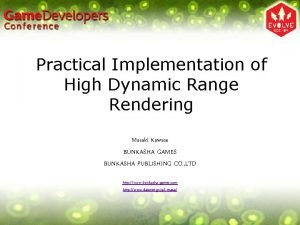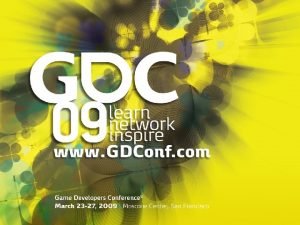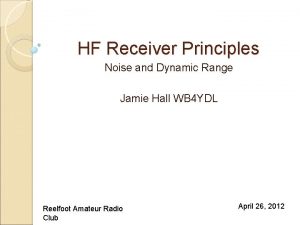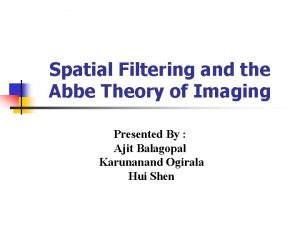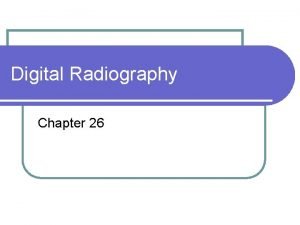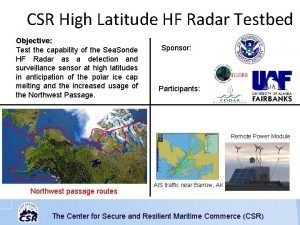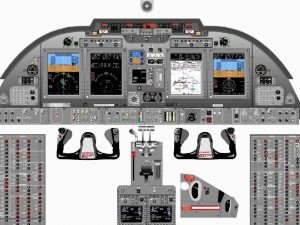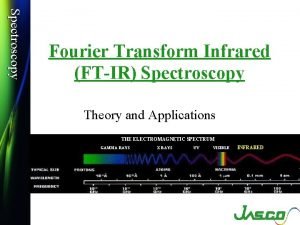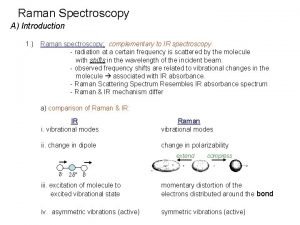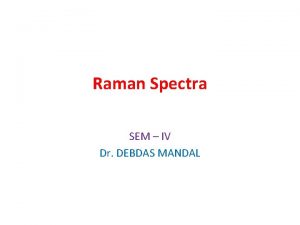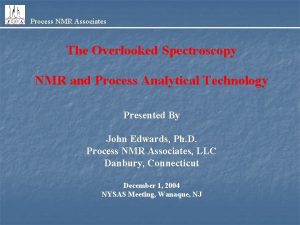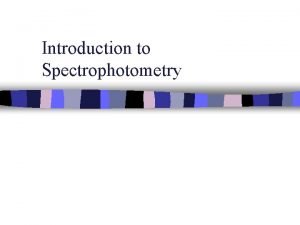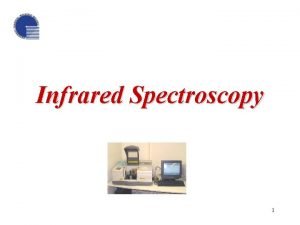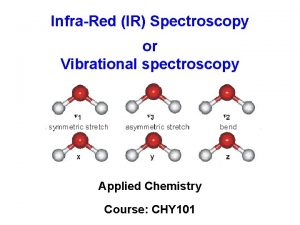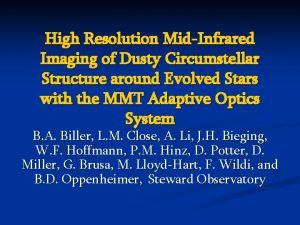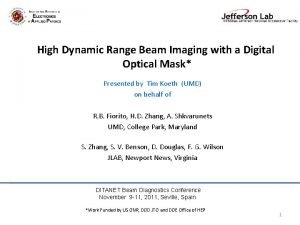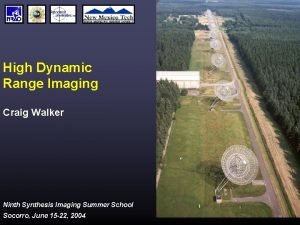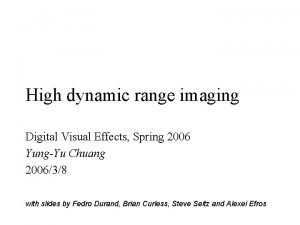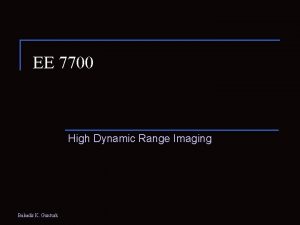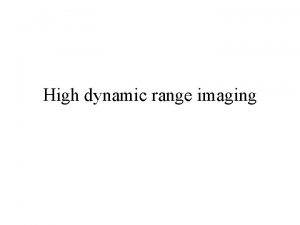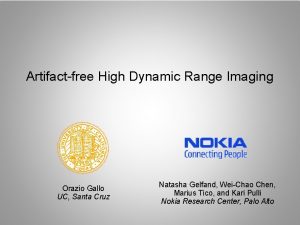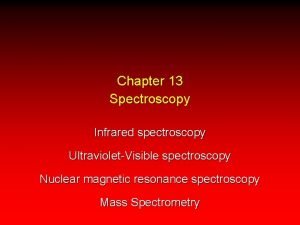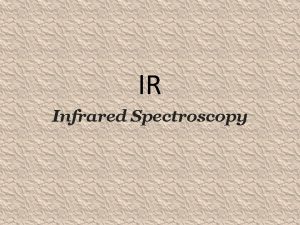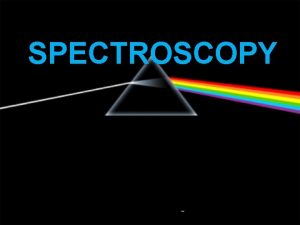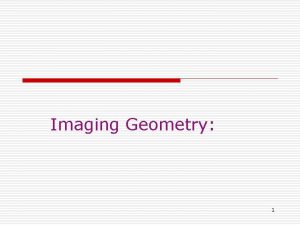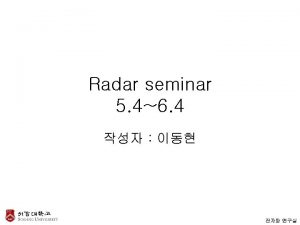High Dynamic Range Imaging and Spectroscopy of Circumstellar























- Slides: 23

High Dynamic Range Imaging and Spectroscopy of Circumstellar Disks Alycia Weinberger (Carnegie Institution of Washington) With lots of input from: Aki Roberge

Planetary Formation Timeline Taurus, Ophiuchus Tucana Hyades star forming b Pic Pleiades regions TW Hydrae a Persei 106 yrs t 0 ? CAI / Chondrule Formation Giant planets form? 107 yrs 108 yrs Moon forming impact Era of heavy Terrestrial planets form bombardment by comets Sun 109 yrs

How Do Planets Form from Disks? v How and when do gas giant planets form (e. g. core-accretion or gravitational instability)? v How do disk materials segregate and move through disks? These are questions that involve GAS and DUST!

“Requirements” 1. To distinguish gas giant and terrestrial planet regions, need spatial resolution of ~1 AU (on GAS and DUST) 1 AU at 150 pc = 7 mas Diffraction limited 20 m at l < 650 nm 2. To actually see the disk at 1 AU, need high contrast between dust scattering and instrumental diffraction/scattering

T Tauri Disks with Gaps Hydrodynamic simulation of 1 MJup planet opening gap at 5 AU 10 mas resolution (ALMA or 2 x worse than 20 m at 500 nm) (Wolf et al. 2002)

ALMA-VLST Synergy From combination of millimeter emission and optical scattered light on similar spatial scales v Break Albedo/Optical Depth Degeneracy v Dust Composition (Grain Size and Growth) v Molecular (ALMA) and Atomic (VLST) Gas Composition [stay tuned] Watch planet formation at 1 -5 AU at the distance to Taurus!

T Tauri Contrast Ratios: Dust TW Hydrae Star: R = 9. 8 mag Face on Disk at 20 AU: Ø 14 mag/arcsec 2 Future: Same contrast at 1 AU? (Krist et al. 2000 and Roberge et al. 2003)

Gas content can distinguish evolved from primordial material Sensitive line-of-sight UV spectroscopy (FUSE and STIS) For Example: AB Aur (~1 Myr old): ISM-like CO/ H 2 primordial b Pic (~15 Myr old): high CO/H 2 comets Lecavalier des Etangs et al. 2001; Roberge et al. 2000, 2001, 2002

UV Sensitively Traces Gas v. N(H 2) <= 1018 cm-2 v. N(CO) = (6. 3 ± 0. 3) x 1014 cm-2 v. CO/H 2 > 6 x 10 -4 w. CO would be destroyed in < 200 yr w. CO must be from planetesimals orbiting several tens of AU from star

Structure of Disks From Gas Resonant Scattering H/a ≈ 0. 18 a 2/7 20 m telescope at l=150 nm 1. 5 mas resln 0. 23 AU at 150 pc H=0. 25 AU at a=1. 5 AU Gas/Dust Ratio Relevant to: Controlling magnetospheric accretion Controlling elemental enrichment

(Brandeker et al. 2003) Want to do this: At distance to Taurus (150 pc) For UV ground-state electronic transitions (e. g. OI, CI, Si. I, Fe. I …) Intensity Vertical Disk Profile (b Pic) Arcsec (from midplane)

How Do Planets Interact With Their Disks? v. How do terrestrial planets get their volatiles? v. What is the relationship between giant planets and giant impacts?

Current State of the Art High Contrast Imaging v High contrast imaging available only from HST: This is the only way to see dust very close to stars! Smith & Terrile (1984) Schneider & Weinberger (2004)

Disk Structure as Evidence for Low Mass Planets For optically thin disks and albedo ≈ 0. 5: Integrated scattered lightl ≈ LIR / L* (Kuchner & Holman 2003)

5 Myr - HD 141569 LIR / L* = 8 x 10 -3 NICMOS STIS ACS (Weinberger et al. 1999, 2003; Augereau et al. 1999; Mouillet et al. 2001; Clampin et al. 2003)

8 Myr - HR 4796 A LIR / L* = 5 x 10 -3 24 mm emission Visual reflection (Koerner et al. 1998, Ap. JL) (Schneider et al. 2004, in prep)

12 Myr - b Pictoris Z (AU) LIR / L* = 2. 5 x 10 -3 STIS, Heap et al. (2000) Keck, Weinberger et al. (2003) Multiple Warps!

200 Myr - Fomalhaut LIR / L* = 1 x 10 -4 vcentral cavity cleared of 90% of its dust vclump or arc produced by dust trapped in resonance with large planet Holland et al. 2003, Ap. J 450 mm 850 mm

350 Myr - Vega (a Lyrae) LIR /L*= 2. 5 x 10 -5 Koerner et al. 2001 Millimeter Emission Wilner et al. 2002

4. 5 Gyr - Sun Zodiacal Light Smooth component + bands (asteroidal, resonance trapped) Albedo (~1 mm): 0. 2 Surface Density: r – 0. 4 Origin: Cometary & Asteroidal (75/25 -50/50) T~230 K [286 K r – 0. 467 L 0. 234 (DIRBE)] a~100 mm LIR/L =10 – 7 (eg. Kelsall et al. , Ap. J, 1998)

Delivery of Volatiles v Where are the ices (particularly water ice) in disks? v Where is the “snow line? ” v Watch era of heavy bombardment (Clark & Mc. Cord 1980)

Spatially Resolved Dust Spectroscopy Example: TW Hya, but want to do this for optically thin disks Albedo as a function of location: What is the collision versus aging rate? Roberge et al. : See Poster!

Bottom Line v Possibility for enormous progress in spatially resolved UV-O spectroscopy to look for: v Gas density, dynamics and location as function of time (when do planets form) v High excitation atomic lines formed in shocks or X-wind (how do planets form) v Water and methane ices (near-IR) as function of location in disk (how do planets form and get their volatiles)
 Frc driver station mac
Frc driver station mac Masaki kawase
Masaki kawase High dynamic range audio
High dynamic range audio As compared to long-range forecasts, short-range forecasts
As compared to long-range forecasts, short-range forecasts Blocking dynamic range
Blocking dynamic range Transferered
Transferered Princeton iac
Princeton iac Abbe imaging and spatial filtering experiment
Abbe imaging and spatial filtering experiment Chapter 39 digital imaging film and radiographs
Chapter 39 digital imaging film and radiographs Chapter 39 digital imaging film and radiographs
Chapter 39 digital imaging film and radiographs Whalley range high school frog
Whalley range high school frog Csr radar
Csr radar Vor phases
Vor phases Terahertz spectroscopy principles and applications
Terahertz spectroscopy principles and applications Spectroscopy definition
Spectroscopy definition Why are raman and ir complementary
Why are raman and ir complementary Difference between ir and raman spectroscopy
Difference between ir and raman spectroscopy Process nmr associates
Process nmr associates Stretching and bending vibrations in ir spectroscopy
Stretching and bending vibrations in ir spectroscopy Advantages of nmr spectroscopy
Advantages of nmr spectroscopy Spectroscopy and spectrophotometry
Spectroscopy and spectrophotometry Applications of uv spectroscopy
Applications of uv spectroscopy Advantages and disadvantages of spectroscopy
Advantages and disadvantages of spectroscopy Stretching and bending vibrations in ir spectroscopy
Stretching and bending vibrations in ir spectroscopy

